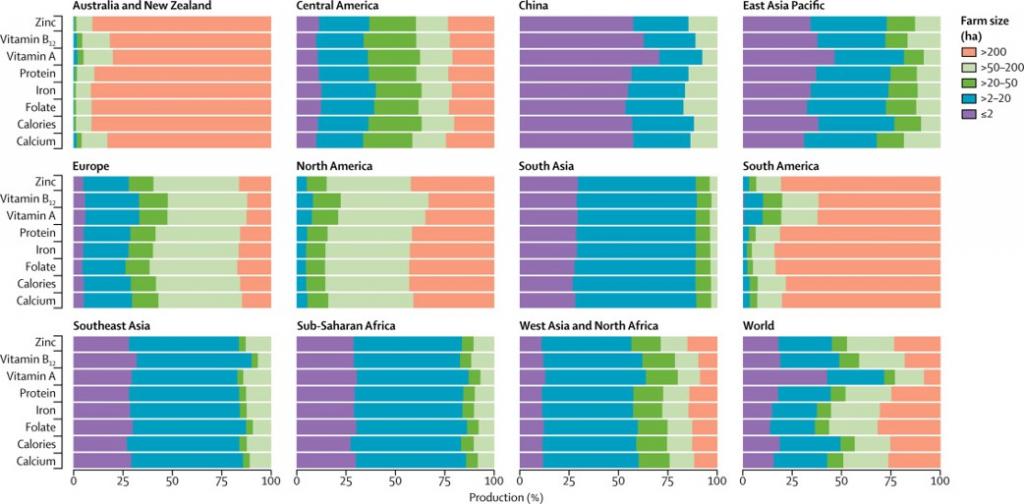To eat a rainbow, we need to grow a rainbow

Small and medium farms are crucial for ensuring nutrient production diversity
A common way that parents of young children may encourage their picky eaters to try new things is by telling them to “eat a rainbow”—to try foods of all different colors, not just plain rice or white bread. It is also advice used by nutritionists to push across a simplified message promoting dietary diversity. And there’s scientific reasoning behind it: different colored foods contain different vitamins and minerals essential to good nutrition and health.
But eating a rainbow depends on farmers growing a rainbow, and a new study published in the inaugural issue of the journal Lancet Planetary Health shows that small and medium size farms are crucial to maintaining this diversity of production.
Answering questions with large datasets
The scientists, led by Dr. Mario Herrero of CSIRO and including CCAFS's Flagship leader Dr. Philip Thornton among others, used location-specific information on the production of a wide variety of crops, livestock and aquaculture products to estimate the production of vitamin A, vitamin B12, folate, iron, zinc, calcium, calories, and protein. They also used information on farm sizes to look at how different size farms contribute to the production of the various nutrients.
Globally, an estimated 51-77% of major food group production comes from farms smaller than 50 hectares. The findings show large regional differences in the production of products and nutrients by farm size, however. In North America, South America, and Australia and New Zealand, large farms (more than 50 hectares) account for 75-100% of cereal, livestock and fruit production. On the other hand, small farms (less than 20 hectares) produce more than 75% of food commodities in Sub-Saharan Africa, Southeast Asia, South Asia, and China.
The numbers for nutrient production are similar to those of commodity production in terms of amounts produced by different farm sizes in the various regions (see figure below). One remarkable piece of information is that 71% of global vitamin A production comes from farms less than 20 hectares. You may remember from your basic biology or nutrition class that vitamin A is essential for eyesight and immunity.

Figure 3 from the article shows the percentage production of various nutrients by farm size and region. Source: Herrero et al., 2017
The researchers also looked at the data by analyzing plot size (which correlates reasonably closely with farm size) and production diversity, and found that as plot size increases, agricultural diversity decreases. Think of a 1000 hectare wheat farm in North America growing a single crop compared to a 2 hectare family farm in East Africa growing several different fruit trees, a tuber crop, one or two staple grains, and some leafy vegetables; and this makes perfect sense.
Implications for policy and practice
What can these new findings mean for researchers and policymakers interested in shaping the direction of food systems to meet both human health needs and environmental concerns?
One of the most important things we can learn from these findings is that large scale agriculture as practiced currently in North America, South America, and Australia and New Zealand would greatly reduce the diversity of nutrient production if expanded to other regions. Both large and small scale farms have important roles to play in the overall food system, and the small farms in developing regions will be crucial for maintaining a supply of diverse crops that meet people’s nutrient needs.
To eat a rainbow, we must grow a rainbow, and small farms are the cornerstone of such production.
Read more
Access the full text of the article: Farming and the geography of nutrient production for human use: a transdisciplinary analysis
Laura Cramer is Science Officer for the Flagship on Priorities and Policies for CSA. Interested in our research? Sign up for the Flagship mailing list.



